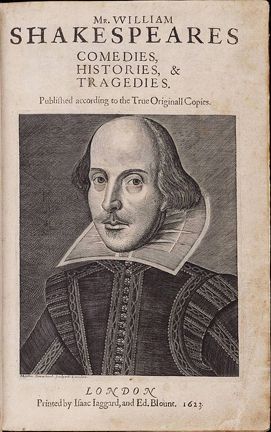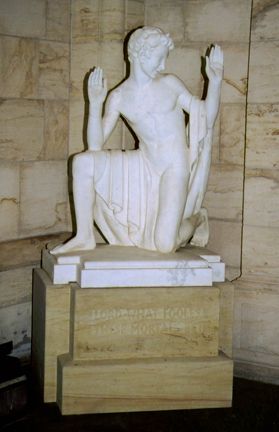
I love it when I go to a bookstore and a book nearly leaps off the shelf into my waiting arms. Such was the case with Andrea Mays’ The Millionaire and the Bard: "Henry Folger’s Obsessive Hunt for Shakespeare’s First Folio." Who was Henry Folger and what was so important about the First Folio? And why did reading this book -- a page-turning dual biography that reads more like a detective story -- compel me to schedule a stop in Washington, DC on my recent summer vacation?
In 1881 a young Henry Clay Folger got a job as a clerk at Standard Oil. Over the years he worked his way up, eventually becoming President and then Chairman of the Standard Oil Company of New York and John D. Rockefeller’s right-hand man. Unlike other industrial titans of the Gilded Age, Folger and his wife Emily lived modestly in a rented brownstone in the Bedford-Stuyvesant area of Brooklyn and had no children. Both highly educated, they shared a love of literature, and Shakespeare in particular.
One day in 1889, Henry walked into an auction house in Manhattan and saw an original volume of Shakespeare’s Fourth Folio. Intrigued by the rather unremarkable specimen, he bid on it and acquired the first item of what would grow to become a massive collection. It would be a few years before he bought a coveted original First Folio.

The First Folio was an expensive labor of love compiled by two of Shakespeare’s contemporaries, John Heminges and Henry Condell, a few years after Shakespeare’s death. Completed in 1623, only about 750 copies were printed. Of those, only about 235 are believed to have survived. It was the first time all of Shakespeare’s plays had been printed, and as history has proven, it remains the only reliable source for many of them.
Just how important is the First Folio? Take the “to be or not to be” soliloquy from Hamlet from the First Folio:
“To be, or not to be—that is the question:Whether ‘tis nobler in the mind to sufferThe slings and arrows of outrageous fortuneOr to take arms against a sea of troublesAnd by opposing end them. To die, to sleep--No more—“
Had it not been for the First Folio, we might have ended up with this from the earlier 1603 “bad” quarto of Hamlet:
“To be, or not to be, Ay, there’s the point,To Die, to sleepe, is that all? Ay, all:No, to sleep to dreame, I mary there it goes. For in that dreame of death, when wee awake,And borne before an everlasting Judge,From whence no passenger euer retur’ndThe undiscovered country, at whole sightThe happy smile and the Accursed damn’d.”
That’s how important the First Folio is.
The first folio’s title page includes the iconic engraved portrait of Shakespeare by Martin Droeshout, commissioned by Heminges and Condell. Although Droeshout himself never met Shakespeare, others who did agreed it was a good likeness, making it the most reliable source for what Shakespeare actually looked like. Henry Folger eventually purchased 82 copies of the First Folio, the centerpiece of his massive collection. The provenance of each copy and even specific pages makes for compelling literary detective work.
After trying in vain to sell their collection to Rockefeller, Henry and Emily decided to found and build the Folger Shakespeare Library in Washington, DC. It opened in 1932, two years after Henry’s death.
And that’s why I had to fit in a stop in DC on my recent vacation.
The Folger is open to the public for free and docent tours are offered daily. An amusing highlight of the tour is the marble sculpture of Puck by Brenda Putnam with the inscription “LORD, WHAT FOOLES THESE MORTALS BE!” It used to grace the front of the library -- overlooking Congress! Unfortunately, it had to be moved indoors, restored, and replaced with an aluminum casting after losing one of its hands to repeated passes by skateboarders high-fiving the raised arms of the kneeling sprite.
Cross-posted from Jane Chafin: Art, Books, Culture

